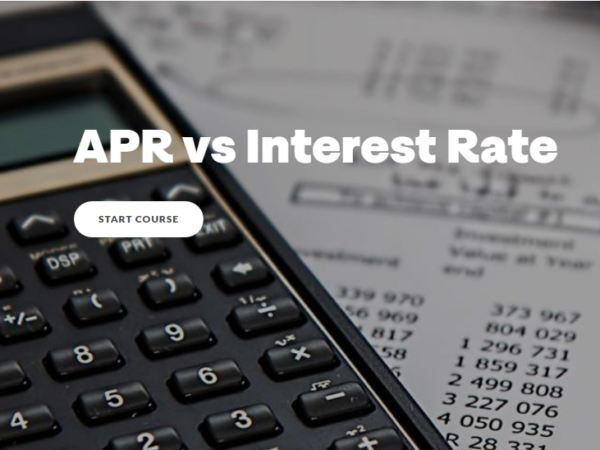Small Business Interest Rates: Compound vs. Simple Interest
Need to borrow money? It’ll cost you. How much depends on how the interest rate is calculated. Take a look at simple vs. compound interest.

Interest is the price you pay for borrowing someone else’s money, but how much you end up paying back depends on the terms of your loan. Paying simple versus compound interest can have a big impact on the overall amount you’ve paid by the end of the term. Let’s take a closer look at these methods of calculating interest rates to get a feel for the differences between the two.
Simple Interest
With simple interest, you apply the interest rate to the principle balance, and that gives you the interest amount you’ll pay over the life of the loan. The formula for calculating simple interest is as follows:
Principal x Interest Rate x Term of the Loan = Simple Interest
You’re paying interest on the lump sum, making it easy to calculate. Let’s say, for example, you’d like to borrow $10,000 at 5% interest for a term of 3 years. Using the simple interest calculation, the equation looks like this:
$10,000 x 0.05 x 3 = $1,500
The total amount of interest you’ll pay back is $1,500. Each year you’ll be paying $500 in interest. Compound interest is a bit more complicated. Let’s take a look.
Compound Interest
When interest is compounded, that means interest accumulates-not only on the principal-but also on the interest that was paid during the previous compounding period. If it sounds like you’re paying interest on your interest, you’re right.Compound interest is more common than simple interest and is the most frequent way interest is calculated when it comes to mortgages, auto, personal, and small business loans.
Compound interest can be good or bad depending on which end of the transaction you’re on. If you’re the lender, you’re going to benefit from receiving a larger repayment as your interest earns interest.
How can compound interest benefit you? Consider your savings account. The bank pays you interest and it becomes part of your total balance. The next time the bank calculates interest, they’ll apply the percentage rate to the total amount of money in your account, including the past amounts of interest they’ve already paid you.
If you’re the borrower, that scenario works in reverse. When you pay interest on your loan, the bank collects it. The next time you make your payment, you’ll pay interest on that interest. Here is the equation for calculating compound interest:
A = P (1 + r/n)nt
- A = total amount you will pay over the life of the loan
- P = the principal amount
- r = the interest rate
- n = the number of times interest is compounded per year-12, if monthly
- nt = the number of times interest is compounded over the whole loan term (12, if monthly, multiplied by the number of years of your term.)
Using our previous example of borrowing $10,000 at 5% interest for a term of 3 years, let’s plug in the numbers and see what we get:
$11,614.72 = $10,000 (1 + .05/12)36
You can also enter the variables into this interest calculator to get the same interest amount. Make sure when using this calculator that your “interest type” is set to compound and that you are selecting the correct “compounding frequency.” With the example above, you’ll want the compounding frequency set to monthly.
Interest Calculator
Let’s try another example. If you borrow $7,000 at 12% interest for a term of 2 years, you can plug those numbers into the calculator and see that you will pay $1,888.14 in interest for a total of $8,888.14 over the life of the loan.
As you can see, you’ll pay more if interest is compounded than you would if you were using the simple interest formula. The number of compounding periods make a substantial difference. The more frequently interest is compounded, the greater the amount of compound interest.
How Do I Know How Much My Loan Costs?
When you take a loan, you should be provided with a Truth-in-Lending statement that discloses your borrowing costs in their entirety, including interest rates. You’ll also receive an amortization schedule which will show the amount of principal and the amount of interest that comprise each payment, illustrating how the loan will be paid in full by the end of its term.
Depending on how frequently the lender compounds the interest-and the way they structure your payback-will affect the amount of money that you’re contributing to interest versus principal. A portion of each payment is applied to both the principal and interest, however the amount applied to the principal varies each time, while the remainder goes toward interest.
Understand Your Loan Terms
As we’ve learned, simple interest rates are straightforward and easy to calculate, whereas compound interest rates are more complicated. It’s important to understand the terms of your loan before you commit to make sure you can afford the ultimate cost of borrowing.









